Kill Screen Magazine's Blog, page 196
November 12, 2015
Far wants to change how you think about videogame vehicles
With his upcoming game FAR, Swiss designer Don Schmocker says he's looking to reinterpret the role of vehicles in videogames. It's not anything outrageous such as making cars edible or turning planes into surfboards (although I'd happily give that game a try too). And it's certainly not Transformers. In fact, Schmocker avoids deliberately stating what his aim is here.
But, given that the traditional-style racing game has had the majority say in what vehicles in games are good for, we can presume that Schmocker positions his efforts against them. In these racers, the role of the vehicle is to move as fast as you can push it, to have you battle with torque and track records, and to also be the virtual toys of would-be playboys who dream of owning any number of shiny sports cars.
Just moving this lumbering body forward requires a great effort
FAR's vehicle is a world apart from the luxuries of motorsports. It's a relatively slow-moving locomotive that looks like it was constructed out of scrap materials that remained after the apocalypse had come and gone. Its shell is a large tin and steel structure that'd be more suited to battering a portcullis than driving across a desolate landscape. It has no windows, billows black smoke from its rear, and runs on huge wheels with broken spokes.
Its interior fares no better than its exterior. As with Lovers in a Dangerous Spacetime, you have to leap from compartments spread throughout the vehicle's entire breadth to operate its many functions—a micro-platformer inside a machine. Just moving this lumbering body forward requires a great effort on your part. Fuel needs to constantly be resupplied with the junk you find outside; the engine will overheat and need dousing in cold water; sometimes you can save fuel by hoisting the sails to catch a passing gust of wind. If you should run out of fuel and have no means to immediately remedy this then you can get out and pull the damn thing. There's no Game Over and quick restart to help you out here.
You put up with this demanding strain as it's your only hope against the hostile environment. It's never stated anywhere in the game but you get a sense that this vehicle is your last hope at surviving. All that is known is that you're stranded in an endless desert of a dried out sea that is prone to dangerous lightning storms. As you travel, road signs countdown the distance left until you reach the coast as you pass by enormous shipwrecks and wind turbines. The coast is often the destination of survivors in post-apocalyptic fiction, a way to avoid the cities plagued with undead and the like, and this logic seems to have been transferred to FAR.
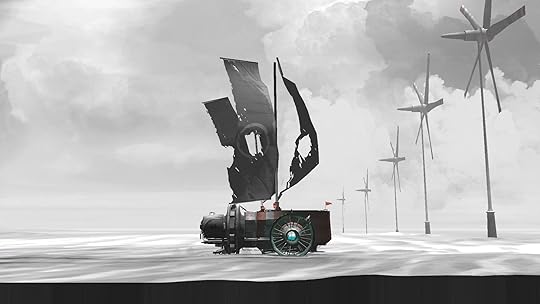
But this is a game about the journey and not the destination (you don't even know what you'll do when you reach the coast). Even with the focus you need to give the vehicle's interior you can't help but give equal attention to the sights you pass by. FAR is one of the few games that compares to its concept art. Almost everything is grayscale, which lets drawing techniques such as shading do all the work to illustrate the world instead of the usual superficial fancy. It's an art style that relies more on the artistry of graphite than it does computer graphics. And this suits the homemade feel of the vehicle and the back-to-basics struggle of its driver.
a quiet game that occasionally gets vicious
The black-and-white visuals also mean that color can be used sparingly but to great effect. Here, it's used to avoid having to use an interface. Instead, our eyes are drawn to the vehicle's different readouts to help us measure its needs in the same ways its driver would have to. Red indicates interactive objects such as buttons or is used to warn of an overheating engine. Blue is used to point out the fuel meter. The distancing effect that a HUD would have is removed so that we learn to pay attention to changes and react accordingly rather than having to explicitly be told.
It's this that prepares us to handle the dangers that lie ahead in FAR's world, such as a broken bridge, or a low-hanging shipping crate that needs to be moved out the way. The vehicle is a companion (it even talks to you through text readouts on a screen), an educational tool, a machine that suffers wear and tear, and not another object made to dispense thrill at our whim. As with upcoming Eastern European road trip game Hac, FAR is a quiet game that occasionally gets vicious but through the implicit lessons of vehicle maintenance it prepares us for these more testing moments.
A short version of FAR has been finished but its team is looking for a publisher to expand upon its concept. Find out more on its website.
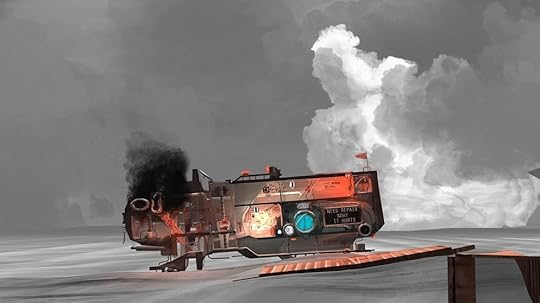
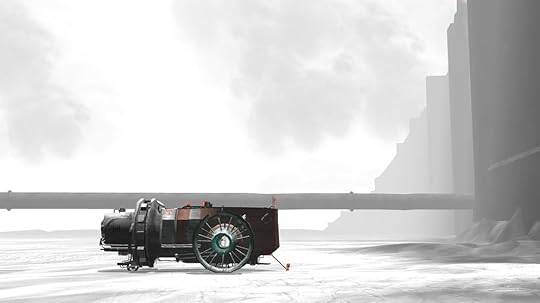
Beneath the many-faceted surfaces of Need for Speed
Disappear here.
Learn the science of the subway in Mini Metro
Sign up to receive each week's Playlist e-mail here!
Also check out our full, interactive Playlist section.
Mini Metro (PC, Mac)
BY Dinosaur Polo Club
New York City admits now that it made a mistake when first rejecting Massimo Vignelli's subway map back in 1972. It had a modernist design that favored clarity over the clutter of trying to be geographically correct. This meant a preference for turning the urban sprawl into a series of straight lines and bold colors. This visual design is something we've come to expect of subway maps these days. And it's what Mini Metro, a strategy game about planning the layouts of urban subways, doubles down upon. It's even cleaner in look than Vignelli's system maps, leaving only rivers and stations as markers for you to observe. Your task is to draw lines between the stations as railways to create an efficient transport system. It's elegant, minimalist, and beautiful. Just don't let any station get overpopulated and you can meditate forever while playing it.
Perfect for: Train drivers, city dwellers, Massimo Vignelli
Playtime: Between an hour and forever
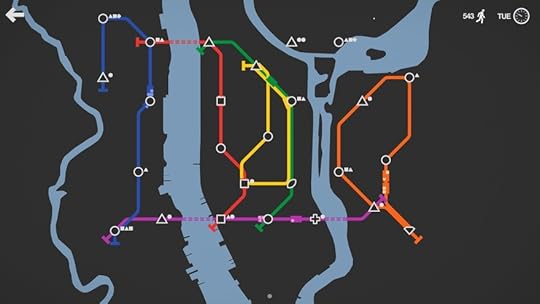
Dogmeat, Fallout 4, and the Anxiety of Everything
Dogmeat is a man’s best friend
November 11, 2015
The Crypt Worlds sequel looks like the fantastic trash-filled mess we wanted
The future of the futile piss sim.
The small, compact horror of The Park
The Park is brief and terrifying, like a great horror film
Relax during wartime by gardening in this upcoming game
Gardening has long been in videogames (I'm thinking Harvest Moon especially), but recently there's been a sprig of interest in small, singular experiences that are concerned with nothing but the procuration of plants. This year alone we've had Viridi, Barmark, and Prune. Each of these find within the careful act of gardening a form of meditative progression; a oneness between nature and ourselves.
A Good Gardener, another upcoming gardening game, seems to follow the same thinking as those that came before it. It started off as a game jam project made for Ludum Dare 32 but has since been cultivated into something fuller and hopefully more engrossing. In fact, I'm going out on a limb here and say that it operates very loosely in a similar way to Papers, Please.

According to co-designer Ian Endsley, A Good Gardener has you in charge of growing a batch of crops to contribute to a war effort. The plot you're given is suitably run-down, as if it has been rescued from the ravages of a conflict by passing soldiers, who then threw your green fingers at it to help feed the frontline. The idea is to grow as many healthy plants as possible and, on occasion, you'll be visited by a supervisor whose job it is to judge your efforts.
"designed to be repetitive and peaceful"
It's a loop that isn't as stringent or as punishing as Papers, Please but it's riffing on the same tics. And if that comparison doesn't satisfy then perhaps pointing out that A Good Gardener seems to be as committed to depicting the smaller details of its subject will help it along. As such, you can raise a hand and throw a seed into the dirt to plant it. As it grows, weeds will emerge around it for you to purge, and you'll need to ensure they get the nutrients they need so they don't die.
You do all this as you've been ordered to. But the creators of the game hope that, with it being "designed to be repetitive and peaceful," you'll find it acts as a gateway to relaxation. You only hang out with your plants, tending to a healthy floriculture, and occasionally observing curious birds that flutter down to patter on the dirt. The overall idea is to give you time to reflect. And this is intrinsic to the experience of A Good Gardener.
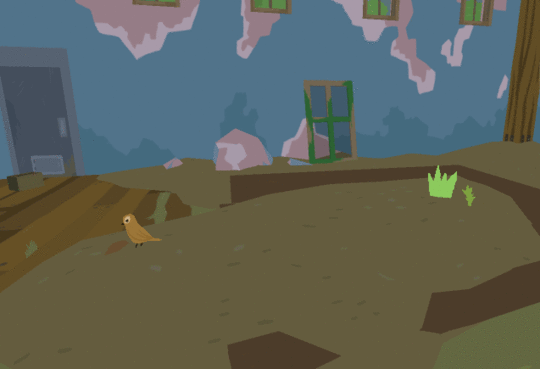
To explain, the creators say that you're supposed to muse on your own character to enact a merging of your inner thoughts. The character is deliberately left as a void to encourage this fusion. And so the only indication you get of the personality of the person you inhabit is through what the supervisor says about them. "Th[e] player's thoughts during this time become the player-character's thoughts: 'What am I doing?', 'Is this all I can do?', 'Am I doing the right thing?'"
It's a complete contrast to the last game created by this team, which was the wonderful Little Party. In that you were tasked with finding out as much as you could about the single mom you played as while your teenage daughter hosted a party in your house for the first time. Still, one element that hasn't changed is the art style, it being a smooth blend of soft polygonal shapes and colors that blend almost like a watercolor painting. It seems much more suited to the greenkeeping lull of A Good Gardener.
Look out for more details on A Good Gardener on its project page.
h/t Pat Ashe
When Obsidian got Fallout very, very right
Fallout 3 had heart. New Vegas had brains and cynicism.
These new GNOG screens are so beautiful they'll swallow you whole
If you're still anxiously awaiting the hungry jaws of the big monster heads in GNOG, you'll have to keep waiting until its 2016 release date. But, in the meantime, feel free to get swallowed up by the latest screens released by Ko-Op Mode.
The screens highlight GNOG's polished yet playful art style, with a deep, pleasing color palette that makes you feel like you could just dive into each shot. Of course, diving into different inner worlds is exactly what the game is all about. Lead artist Sam Boucher has explained to Kill Screen that in GNOG, “Each head is kind of like a packed ‘hypertoy’ filled with secrets and toys, and players poke around, interact with the weird objects, and find links between things."
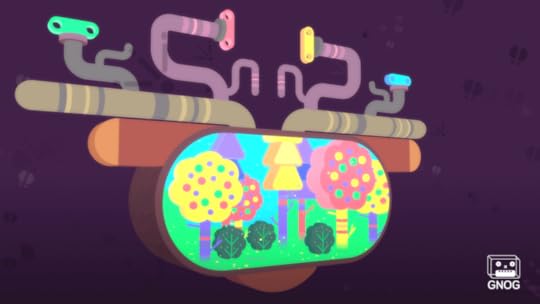
The new screens also come with a wonderful announcement: GNOG will be published by Double Fine and be coming to both Playstation 4 and with VR support (Steam and iOS following a few months thereafter). As designer Saleem Dabbous explains on the TIGSource forum, the switch to console forced Ko-Op to focus on getting the feels for a controller cursor down.
Their inspiration ended up coming from a lovely place: Plug & Play. Saleem describes how they loved the "lively flowey ring" that surrounds every interactive object. Using this method allowed them to include different custom animations for various interactive objects. Like, "if there’s a knob that’s super hot and you try to grab it, the cursor can play a “too hot” animation and turn black, giving it an in-game connection to the world." Saleem notes how wonderful this new development is for the game, Since GNOG is all about the physicality of the interactions, incorporating the cursor into the game world makes a lot of sense.
polished yet playful art style
Ko-Op's update also mentioned a separate design challenge for the changes needed for virtual reality. While, originally, the designers intended to keep the monster heads floating in a void, they discovered that this doesn't bode well for VR. So now, the team is adding some background elements for death.
All in all, Saleem says "we're really liking how the game's visuals are shaping up now that we've refined the process." Take a look for yourself at the screens below to see if you agree.
You can follow GNOG's development story on TIGSource or through its official website.



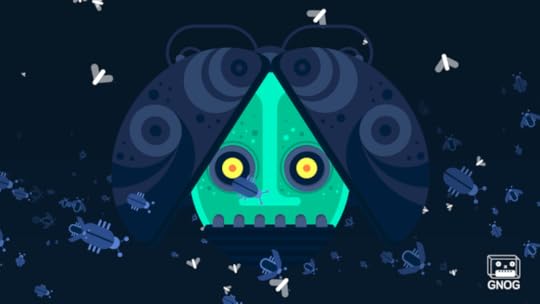

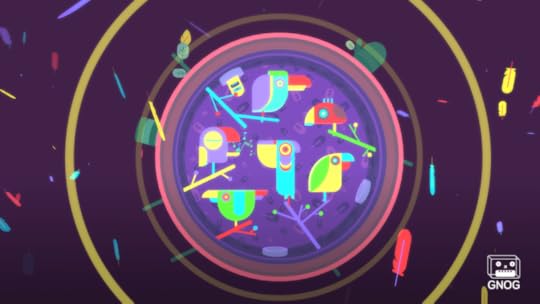

Halo 5: A cooperative review
On Halo 5, and the triumph of gunfeel (patent pending).
Kill Screen Magazine's Blog
- Kill Screen Magazine's profile
- 4 followers



